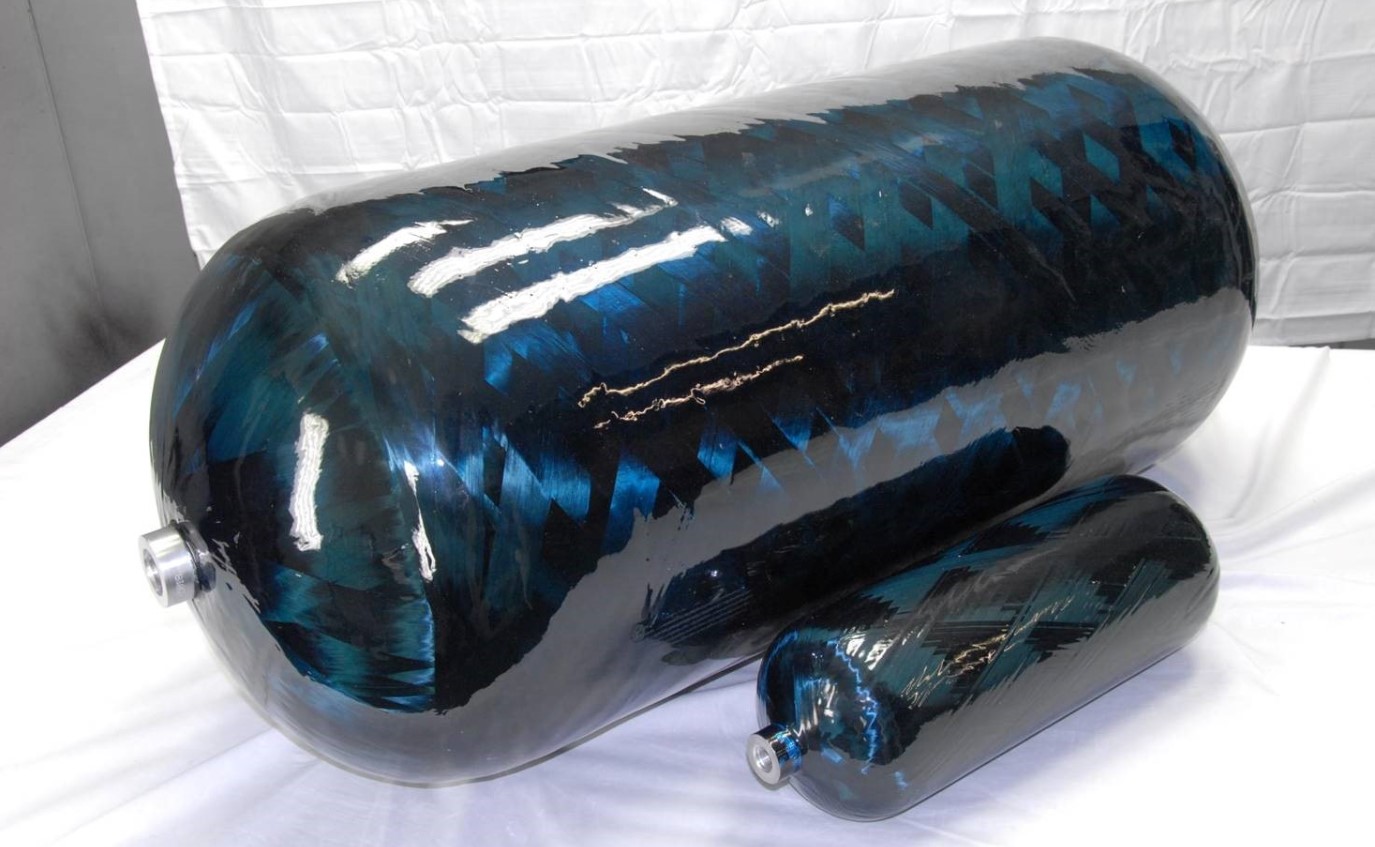In the realm of onboard high-pressure hydrogen storage tanks, the application of carbon fiber is capturing widespread attention. This article aims to analyze, explain, and contextualize the concept of using carbon fiber cylinders, delving into their advantages, key parameters, and relevant data in a logical and scientific manner.
Advantages of Carbon Fiber Hydrogen Storage Tanks:
- Lightweight Design: One of the significant advantages of carbon fiber hydrogen storage tanks lies in their lightweight composition compared to traditional metal cylinders. This characteristic alleviates the overall weight of the vehicle, a critical factor in enhancing fuel efficiency and increasing driving range.
- High Strength and Corrosion Resistance: Carbon fiber boasts exceptional strength and corrosion resistance, providing hydrogen storage tanks with a durable and robust structure. This resilience is vital for ensuring the longevity and reliability of the tanks, particularly in the demanding conditions of onboard vehicle applications.
- Enhanced Safety: The application of carbon fiber in hydrogen storage tanks contributes to improved safety. These cylinders often incorporate advanced safety features, including rupture prevention mechanisms, ensuring a secure and reliable storage solution for high-pressure hydrogen.
Key Parameters and Supporting Data:
- Tensile Strength: Carbon fiber’s remarkable tensile strength is a crucial parameter in the design and functionality of hydrogen storage tanks. Comparative studies demonstrate that carbon fiber exhibits strength comparable to, if not exceeding, traditional materials used in such applications.
- Weight Efficiency: The weight-to-volume ratio of carbon fiber cylinders is a key parameter contributing to their efficiency. Comparative data analyses reveal the substantial weight savings achieved with carbon fiber, optimizing the performance of onboard high-pressure hydrogen storage.
- Material Durability: Scientific evaluations of carbon fiber’s material properties showcase its resistance to fatigue and degradation over time. This durability is essential for ensuring the extended service life and consistent performance of hydrogen storage tanks in vehicular applications.
Logical and Scientific Application:
In the logical and scientific application of carbon fiber in onboard high-pressure hydrogen storage tanks, rigorous testing and analysis are integral. The design process involves precision engineering, utilizing advanced manufacturing techniques and cutting-edge production technologies to ensure structural integrity and uniformity.
Scientifically, the implementation of carbon fiber aligns with stringent safety standards and regulations. Ongoing research and development continually refine the material’s properties, optimizing its performance in hydrogen storage applications.
Conclusion:
The integration of carbon fiber into onboard high-pressure hydrogen storage tanks marks a transformative step towards achieving sustainable and efficient hydrogen-powered vehicles. The combination of lightweight design, high strength, and enhanced safety positions carbon fiber as a key player in shaping the future of clean energy transportation. As the automotive industry increasingly embraces hydrogen fuel cell technology, the versatile and advantageous nature of carbon fiber will undoubtedly play a pivotal role in driving innovation and sustainability.
Post time: Nov-13-2023

